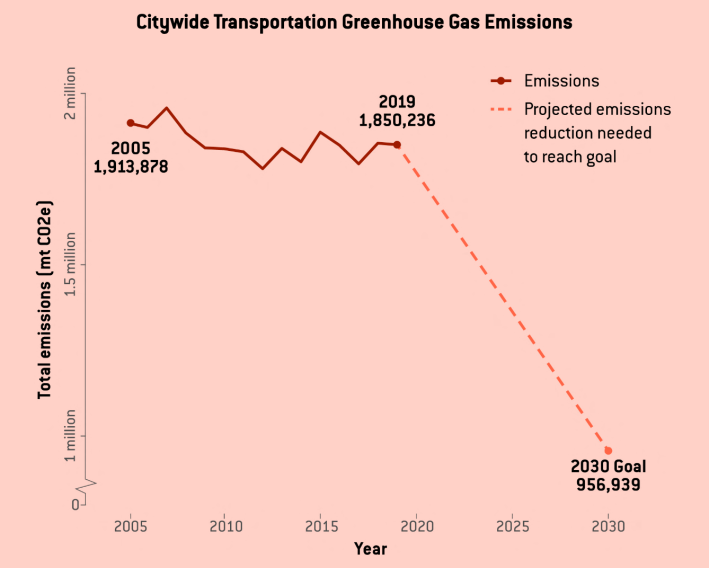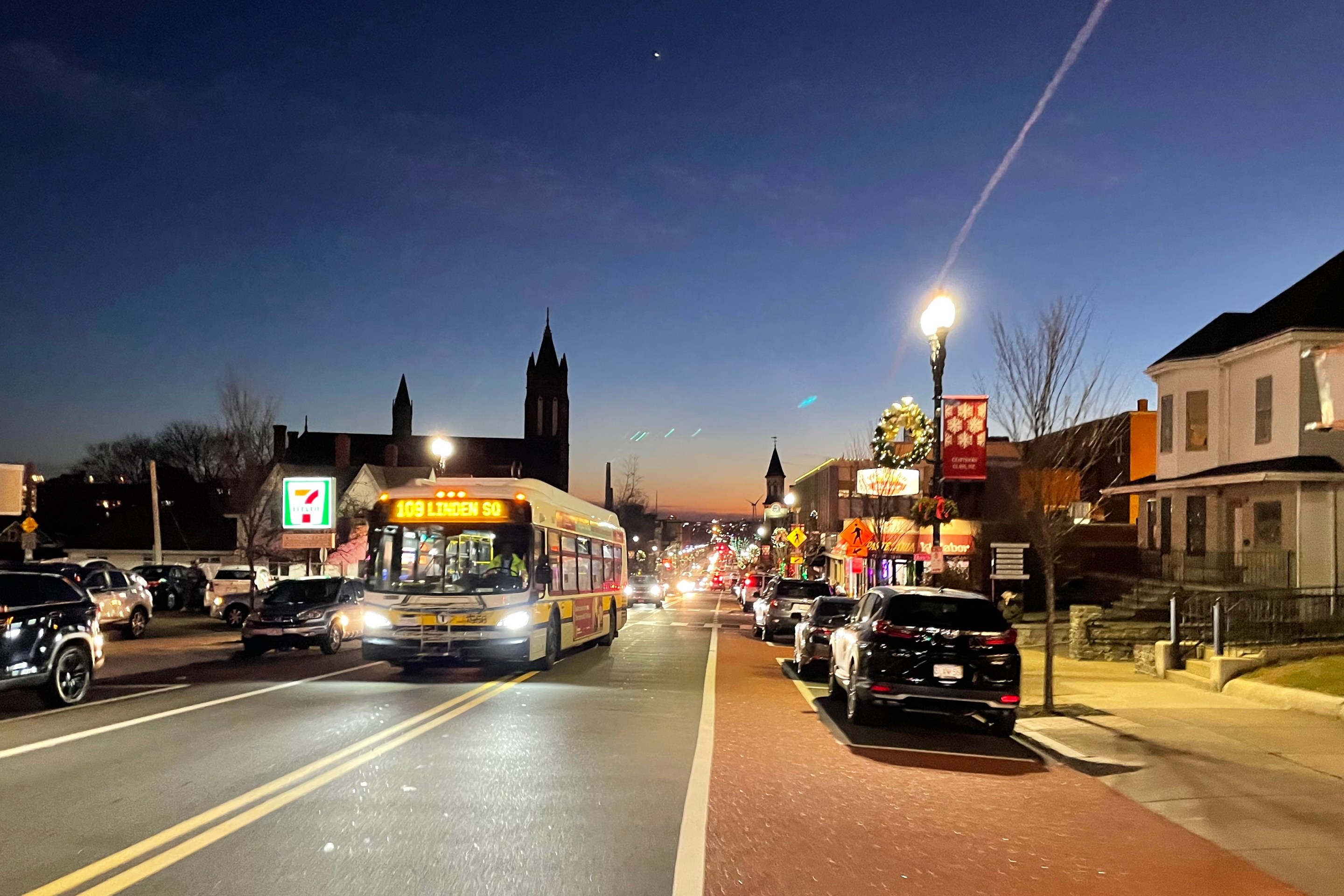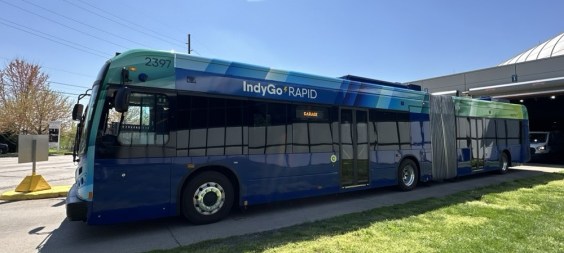Go Boston 2030, the city's long-term transportation plan, set goals for the city to reduce the number of car trips inside the city's limits by half and eliminate serious injuries and deaths from traffic violence by the end of this decade.
The plan came out in March 2017 – six and a half years ago this fall. Just a little over 6 years remain until the year 2030.
At the halfway point towards its self-imposed deadline, the City of Boston is making measurable progress on a number of the transportation goals it set for itself six years ago.
But in other areas, there's been little forward progress. And some goals of the 2017 plan seem, in six years' worth of hindsight, obsolete or irrelevant.
On Thursday, the LivableStreets Alliance released Not on a Shelf 2023, its second progress report on the city's efforts to implement the Go Boston 2030 plan.
The title references a recommendation near the end of the original Go Boston 2030 document, which said that "without a mechanism to ensure that progress is being made, Go Boston 2030 might sit on a shelf."
“As the world continues to recover from the pandemic, it will be crucial for the City to ensure they don’t backslide and continue to make progress," said Stacy Thompson, Executive Director of LivableStreets (editor's note: Thompson also volunteers on the StreetsblogMASS Board of Directors). "We are excited to work with the City to ensure forward momentum."
Still no progress on climate goals
One of the biggest alarms that LivableStreets raises in their new progress report relates to one of the most important goals in the Go Boston 2030 plan: cutting climate-heating air pollution from motor vehicles in half from 2005 levels.
According to the city's most recent data, motor vehicles in the city were still pumping 1.9 million metric tons of greenhouse pollution into the atmosphere in 2019, the most recent year for which city-level data is available.
That's a statistically insignificant change from 2005's pollution levels (although as with many other benchmarks, LivableStreets notes that there's a need for better and more current data reporting).

As LivableStreets notes, Boston's lack of success in reducing tailpipe emissions is reflected in slow progress on a number of other Go Boston 2030 goals.
For instance, where Go Boston aspires for a completely zero-emission fleet of city vehicles by 2030, as of 2023, only 57 out of 1,157 city-owned vehicles (5 percent) run on electric motors.
Strong progress on safer streets
Fortunately, the City of Boston earns much higher marks for its accomplishments in improving street safety over the past six years.
The city has actually met its 2017 target to reduce pedestrian and bicycle-related collisions by at least 30 percent, seven years ahead of schedule.
“The City’s ability to reduce serious crashes and traffic fatalities, when other cities across the country are struggling to do so, is a testament to the City of Boston's commitment,” says Thompson, the executive director of LivableStreets.
And the number of deaths on Boston's streets, while highly variable, also shows signs of declining – bucking trends across the rest of the state.
The progress report also notes strong progress in the city's goal to install more protected bicycle infrastructure, to achieve Americans With Disabilities Act compliance, and to reduce transportation cost burdens.
Letting the plan age with grace
LivableStreets last released a "Not On A Shelf" progress report in March 2020 (read our coverage here).
Events of the subsequent three years – the pandemic, nationwide protests against police violence, and, locally, the deterioration of the MBTA – have dramatically reshaped cities and how people get around.
The LivableStreets progress report notes that a number of the goals that the city set in 2017 are difficult to measure, and some other goals – like one to make "the occupancy status of every metered on-street parking space in Boston available in real time" – are less urgent than preventing roadway violence and addressing the climate emergency.
In conjunction with the release of the LivableStreets progress report, the City of Boston also announced on Thursday that it will launch an official update of the Go Boston 2030 plan to re-focus the city's goals.
“We have accomplished a lot in the past five years, but we still have work to do. How people move around Boston has changed since we first released this plan," said Jascha Franklin-Hodge, Boston's Chief of Streets, in a LivableStreets press release issued on Thursday. "We aim to reflect these changes as part of the process for 'GoBoston 2030 ReVisioned,' which will allow us to update the plan and assure we reach and expand our goals.”
Read the LivableStreets Alliance's Not On A Shelf 2023 report here.






